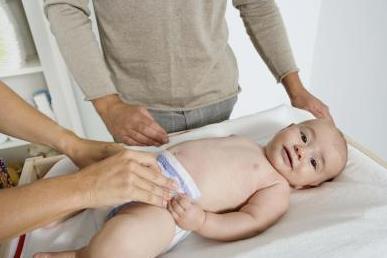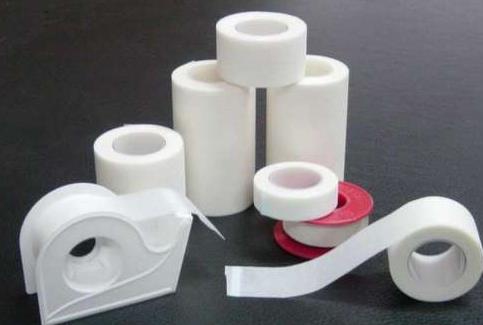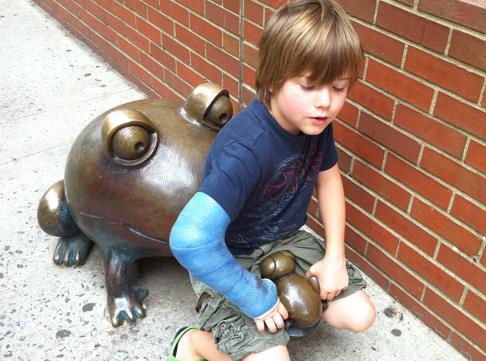When baby boy is born, his testicles come down in the scrotum. In a medical condition, sometimes the testicles don’t come down in the scrotum naturally, than it needs surgery. This surgical process is called Orchiopexy. Small incisions are made in the groin and scrotum and testicles are placed in the scrotum and stitched. The best age for this process is considered prior to one year but after six months. One must know something about Orchiopexy surgery, if their children suffer from this condition. Ten things to know about the Orchiopexy are enlisted below:
10 Things to Know About Orchiopexy
The Process of Orchiopexy
When a baby boy is born his testicles come down in the scrotum or are already in the scrotum. When the testicles are not in the testicles, this condition is called Undescended testicles. In some cases the testis can twist on its axis thus stopping its blood supply. To solve this problem a small orchiopexy surgery is performed.
First, the doctors locate the testis with endoscope. When found, small incisions are made in groin and scrotum. Doctors pull down the testicles and place it in the scrotum and secure in its place with stitches. This surgery is called Orchiopexy. It can be performed with laparoscopic surgery. Laparoscopy is a technique in which a small hole elsewhere in the body is made and through this hole the process is carried out. The physicians will decide on the right course.
The Importance of Orchiopexy
The parents may ask this question as the baby may be very young at this time. In normal births, the testis move from the abdomen into the scrotum. In some cases, the testis doesn't descend down. One or both testicles may not descend in their right place. Sometimes, they may twist and stop the supply of blood causing pain. If the testicles are not placed in their right position it may affect growth and its normal functions. Orchiopexy is performed to restore the testis to its right location so it can perform its normal functions.
It gets more important if the testes revolve on its axis or to avoid testes retraction. Similarly, testicular cancer symptoms can prevent from testicular cancer if dealt early with the surgery. What is testicular cancer? The condition of lump and tumor formation in the testes is called testicular cancer.
Your Child Can Come Home the Same Day
The surgery is minor except in some cases. Ask the doctors when you can take the child home. Mostly, child can go home the same day. The child would have some minor pain which is obviously from the surgery. Medicine is given to control it.
The Surgery Dressing
In normal orchiopexy, one incision is made in the groin and a couple of incisions on the scrotum. Derma bond, clear plastic bandage, gauze, or small dressing is put on the wounds. In laparoscopy, incisions are made in umbilicus and in groin. So the dressing is used on these too.
The stitches underneath the skin get dissolve in some days. Derma bond will itself fall off. Remove the gauze bandage the next day. Plastic bandage may be taken off after a week. In laparoscopy, the incisions are bigger. Ask the doctors about the stitches and dressing.
Healing Time
After the orchiopexy, bruises, swelling and discoloration on scrotum is normal. It will become normal in few consecutive weeks. At the point of incisions, lumps may be felt; it is normal. It is called the healing ridge. In few months the lumpy areas will smooth out. If the incisions bleed which wets the dressing, push it gently for ten minutes. If bleeding continues, call the doctor.
Diet After the Surgery
The child can eat after going home. Don’t give solid food. Begin with liquids such as juices, water and ice candies. He would be able to eat normally in few days. Slowly begin solid foods. Some children may feel nauseated due to anesthesia for the orchiopexy. They may throw up. Once, the surgery’s effects fade away, he will get normal.
The effect should not last to the next day. If the conditions persist, ask the doctor. If you notice any of testicular cancer symptoms mentioned in section 9, take it seriously and report it immediately.
Things to Look For During Shower
You can bathe your son the next day after orchiopexy surgery or testicular surgery. Be careful about the dressing. If your boy wears diaper, then for each diaper change wash the scrotum gently to avoid any infection. Use antibiotic cream for the incision on the scrotum. Apply it after all diaper changes. Use it four times for children who are not of diaper age. Apply it gently, don’t spread it with force. This cleansing and anointing would prevent any infection.
Precautions for Play
After the orchiopexy, some precautions are mandatory. Little child would require less effort to control. Just make sure that they don’t sit in straddling position. Older children need more monitoring. They should not ride any toy that requires straddling positions. Don’t allow any bikes, walkers & swings for complete 3 weeks. If a child is old enough to go to schools, they may join it after 3 to 5 days.
In schools, they should not join sports or gym for 3 weeks after the orchiopexy. For swimming pool, ask the doctors. If these precautions are not taken, it may develop into a serious problem of tumor in the testes. Read what is testicular cancer, in section 2.
Emergency Care
If you see some of these conditions after testicular surgery, immediately consult the doctor: red coloration on the scrotum or groin, swelling and foul smell, increased pain despite the use of Tylenol or bleeding for more than 10 minutes which doesn’t stop by applying gentle pressure. Vomiting for a day is normal, but not more than one day. Problem in urination or not peeing for more than 8 hours is also not a good sign. If stomach gets upset or fever exceeds 102 F, is also concerning. Or if you see any other symptoms, see the doctor immediately. Some bleeding from incision is normal after orchiopexy for one or two day. If you see testicular cancer symptoms, you should inform the doctor.
The symptoms of testicular cancer are: lump in the scrotum, heaviness in the scrotum, pain in groin, testes and back, collection of fluids in the testicles and tenderness in breasts.
Best Age for Orchiopexy
The best age for the orchiopexy is under one year but more than 6 months. The best time is from 6-12 months. You may postpone the operation for some years, but this will affect the growth and natural functions. Studies show that the surgery prevents from testicular cancer when performed before the age of 10-11 years.
Conclusion
Orchiopexy or the testicular surgery is a surgical procedure that solves the anatomical problem of undescended testicles. Surgery is important for normal testicular functions. Some precautions prevent any complication.
Sometimes, bleeding and other symptoms such as swelling, pain, bleeding, stomach, fever, etc may appear after the surgery. Call the doctors, if you see some of these in your child. You need to know that what is testicular cancer?







View All Comments /Add Comment